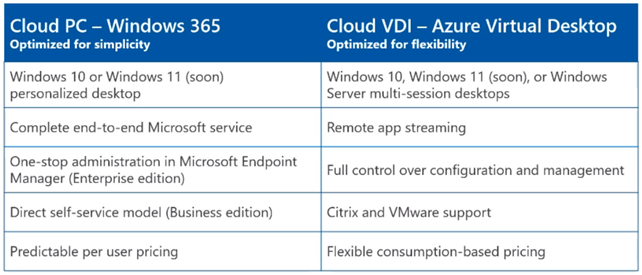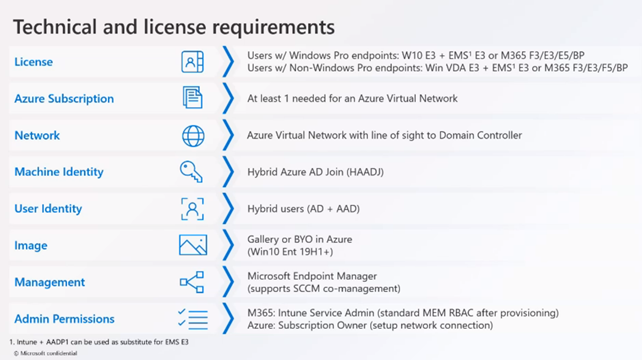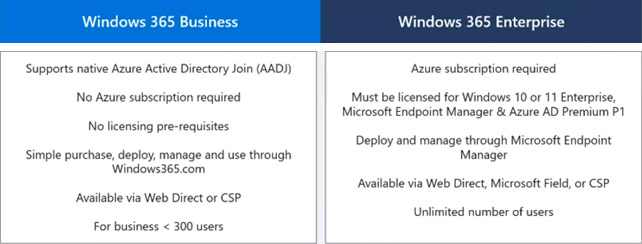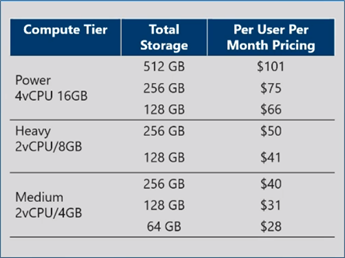This website uses cookies so that we can provide you with the best user experience possible. Cookie information is stored in your browser and performs functions such as recognising you when you return to our website and helping our team to understand which sections of the website you find most interesting and useful.
Windows 365 Cloud PC: What You Need to Know

Earlier this summer, during their annual partner event, Inspire, Microsoft announced a new feature coming to its growing cloud services, Windows 365. This new service is a full cloud PC solution. A remote Windows desktop is not a new concept, and it’s something that many businesses are utilizing right now via Microsoft’s Remote Desktop Server (RDS) or similar solutions offered by other vendors. However, a Remote Desktop Server environment requires businesses to either host the solution on in-house hardware and deal with the upkeep of the equipment as well as the security complexities that come with RDS or pay a monthly fee to host the necessary servers on a cloud platform, such as Microsoft Azure. Windows 365 aims to simplify this by removing the need to host and maintain the backend that makes the cloud desktop possible.
Built on top of an existing service offering, Azure Virtual Desktop, the Windows 365 service removes the complexities of a traditional Virtual Desktop Infrastructure (VDI) deployment. Besides handling the deployment, IT staff will not have to concern themselves with the ongoing maintenance that comes with a VDI environment. Microsoft sees Windows 365 as the solution that most SMBs will want, but if you are a larger enterprise looking for more customization and flexibility, then you may want to still consider Azure Virtual Desktop. The below chart will help you determine which solution is best for you.

Benefits of Windows 365
With Windows 365, users will have a consistent Windows experience no matter the device or operating system they are connecting from. There is support for any business application you may need, as long as it’s able to run on Windows. Any applications that are installed, customizations made, or data saved will stay consistent as you access your Cloud PC between multiple devices.
IT staff will be able to procure, provision, and deploy a Cloud PC in minutes. Besides being able to pick from Cloud PCs with Microsoft apps being pre-installed, as well as automated OS updates, you can also utilize Microsoft Intune to automate the deployment of another line of business applications. Additionally, Intune can be used to automate the customization of the Cloud PCs layout and settings. Organizations will be able to quickly ramp up Cloud PCs based on growing business needs or reduce their Cloud PC count during times of slower operations, removing the logistics that came with procuring new physical hardware in the past.
Technical Requirements
There are several technical requirements needed in order to start using Windows 365. The below infographic outlines these best. The main things to note are the need for the Azure Subscription and an Azure Virtual Network that can route to a DNS server that is able to resolve Active Directory (this can be on-premises AD or Azure AD). If you want the PCs to be Hybrid Azure AD joined, you must sync your on-premises AD with Azure AD via Azure AD Connect.

Licensing
Windows 365 is licensed based on per-user-assigned licenses via the Microsoft 365 Admin Center, the same as you’d assign any other Microsoft 365 license, such as Microsoft Business Premium. There are two different versions to choose from, Business and Enterprise. The below infographic outlines the differences between these; take note of the max user limit for the Business option.

Additionally, there are costs associated with the amount of computing power you allocate to the Cloud PC. While a frontline worker may need limited resources to just access Office applications, a power user running development tools could need something a bit beefier. See the below chart for the resource options and their associated per-user monthly pricing.

Summary
Windows 365 is one more option that Microsoft offers organizations that are looking to move toward a modern workplace. It gives flexibility to their workers and increases IT staff productivity. With built-in security, the threat of endpoint vulnerability is reduced, and your journey to a Zero Trust security model is advanced. Compliance needs are also simplified by being able to enforce organizational policies designed to meet regulatory needs. For additional information, see Microsoft’s blog post that was published on Windows 365.
This publication contains general information only and Sikich is not, by means of this publication, rendering accounting, business, financial, investment, legal, tax, or any other professional advice or services. This publication is not a substitute for such professional advice or services, nor should you use it as a basis for any decision, action or omission that may affect you or your business. Before making any decision, taking any action or omitting an action that may affect you or your business, you should consult a qualified professional advisor. In addition, this publication may contain certain content generated by an artificial intelligence (AI) language model. You acknowledge that Sikich shall not be responsible for any loss sustained by you or any person who relies on this publication.




